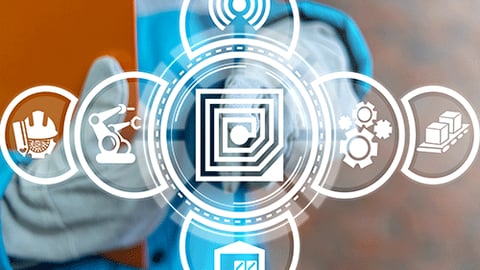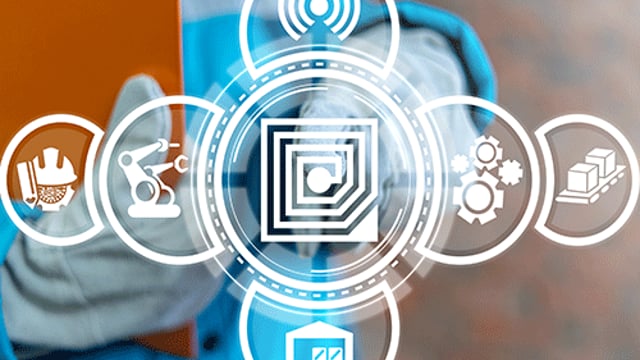
Nearly 1,400 people fell ill in the U.S. in 2024 from food that was later recalled; an astonishing 98% of those cases traced to just 13 outbreaks.
Nineteen people died, double that of 2023. These stark figures from the US PIRG Education Fund highlight the serious consequences of contaminated food entering the market, with all but one of the outbreaks linked to Listeria, Salmonella, or E. coli.
From eggs to deli meat, food recalls continue to make headlines. Even when only part of a batch is affected, contamination fears often result in the entire lot being discarded to ensure public safety. Needless to say, recalls lead to massive amounts of edible foods being destroyed, and billions of dollars lost.
In today’s grocery landscape, better supply chain visibility and data accuracy are essential to enable quick and precise action to keep consumers safe. The US Food & Drug Administration’s (FDA) Food Safety Modernization Act (FSMA) was originally signed into law in 2011 to help regulators trace and recall contaminated products.
The Food Traceability Final Rule (known as FSMA Rule 204), mandates which foods will be subject to stricter scrutiny when it comes to recalls. Food types on the Food Traceability List which include fresh produce, soft cheeses, eggs, nut butters, ready-to-eat deli items and seafood, will be subject to extensive recordkeeping requirements on businesses handling these products.
However, the FDA recently announced it will delay the compliance date by 30 months, pushing the deadline from January 20, 2026, to July 20, 2028.
The food traceability gap
The extended timeline gives America’s food retailers valuable opportunities to build more robust systems for tracking high-risk foods. While many have made significant progress in their traceability efforts, full data clarity from source to store remains a work in progress for much of the industry.
When a retailer can quickly trace a packet of feta cheese or jar of peanut butter back through its entire supply chain, they’re not just meeting regulations, they’re protecting consumers and their brand reputation simultaneously. This capability is rapidly becoming the industry standard rather than the exception.
Digital technologies including blockchain, IoT sensors, QR codes on packaging and intelligent labels inlaid with RFID technology are emerging as game-changers for food traceability, with adoption accelerating across the sector. Enabling end-to-end visibility empowers retailers with streamlined data collection, enhanced temperature monitoring, automated expiry tracking and precision recall capabilities.
A good example is a grocery chain implementing intelligent labels with RFID tracking for its private-label produce in order to transform recall response capabilities. During a potential contamination scenario with their frozen chicken, they will be in a position to identify affected lots in under an hour. This shows how technology investments translate directly to consumer safety and operational excellence.
Supplier networks
Recognizing that traceability is a shared responsibility, retail leaders are actively supporting their supplier networks through this transition. It’s taken a while for momentum to build, but as a technology provider, we at Avery Dennison are now seeing cooperation across the food supply chain. GS1 Standards for food, combined with blockchain-enabled data sharing, play a key role in strengthening transparency, traceability, and trust across parties. The best way forward is for brands to work hand-in-hand with suppliers of all sizes, to create integrated traceability systems that benefit everyone.
These partnerships take many forms: technology investments, clear communication of requirements, flexible implementation timelines, and the development of shared data platforms that accommodate various tracking capabilities. This collaborative approach ensures that even smaller suppliers can participate in the traceability ecosystem.
The business advantage: Operational excellence
Innovative retailers understand that advanced traceability offers enterprise-wide benefits well beyond compliance. Better inventory visibility leads to optimized stock levels, increased sales and reduced carrying costs.
For instance, Avery Dennison’s RFID-based intelligent labelling digitizes expiry dates for individual products, helping manage food waste by adjusting prices as items near expiration. In a recall, affected lots can be precisely identified, reducing unnecessary waste, disruption, and cost, while acting quickly to ensure consumer safety.
Equally important, today’s consumers expect transparency. Richer product information—like freshness and origin—can be shared via QR codes. For example, shoppers can choose steak with three days of freshness left or trace the source of an avocado. Retailers who provide this level of visibility build greater customer trust and loyalty in an increasingly competitive market.
Stay on track with supply chain traceability
Despite the extended FSMA Rule 204 timeline, the time to act is now and I’m confident the food retail industry will keep driving supply chain traceability forward. In the end, getting this right can make all the difference to lives and livelihoods.
Success will take close collaboration with suppliers, smart technology choices, and a commitment to ongoing improvement. With partners like Avery Dennison, retailers are well-positioned to not only meet compliance but to help build a safer, more transparent food system for all.
Julie Vargas is VP and GM, identification solutions, Avery Dennison.
https://chainstoreage.com/why-food-supply-chain-traceability-hot-topic

